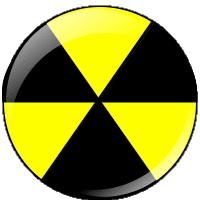 | RADTRAD |
| |
RADTRAD Contacts at Serco
Terence J. Heames
Professional Experience
Mr. Heames is a senior member of the technical staff with more than 25
years of experience in numerical heat transfer, multiphase fluid dynamics, and
radionuclide phenomena. Mr. Heames helped develop the radionuclide transport,
removal and dose (RADTRAD) code. The code focuses on the behavior of radionuclides
released from the reactor coolant system as they move from the release point to either the
control room or the environment. He was responsible for implementing the models for both
natural and engineered removal mechanisms, the acceptance tests, and the code
documentation. He was responsible for the RADTRAD calculations undertaken for the Nuclear
Regulatory Commission (NRC) rebaselining study. He developed the course to acquaint users
with the code and has taught it both at the NRC and at utilities. Mr. Heames helped develop the VICTORIA code for the NRC at Sandia National
Laboratory (SNL). VICTORIA is a best-estimate model of the fission product behavior within
a reactor vessel and coolant system during a severe accident and is used to determine the
source term. He assessed overall code performance against a wide variety of fission
product release experiments performed at SNL, ORNL, and elsewhere, and specifically
evaluated several of the fission product behavior models included in VICTORIA. Mr. Heames
also helped develop the VELVET model for pH, aqueous and thermal chemistry of iodine used
in the MELCOR reactor safety code. Mr. Heames previously worked on the MELPROG light water reactor severe
fuel damage analysis code, also with SNL. MELPROG is a best-estimate model that provides
an integrated analysis of core degradation and material relocation, primary system
thermal-hydraulic response, fission product release and relocation, and vessel failure due
to a severe reactor accident. He performed the source term calculations using the combined
MELPROG/TRAC code systems, on the SURRY pressurized water reactor (PWR) using the
TMLB’ and TMLB’ with S3B scenarios. Education
M.S.: Mechanical Engineering, Northwestern University (1975) B.S.: Mechanical Engineering, Loyola Marymount University (1966) Publications (partial list)
"RADTRAD: The Simplified Decontamination Models" ANS 2001
Winter Meeting. "Application of the Alternate Source Term Methodologies to Facilitate
Plant Modifications" ANS 1999 Winter Meeting, Vol 81, 247-248. "Evaluation of the Radiological Consequences of Design Basis
Accidents at Operating Reactors Using the Updated Source Term" Sandia Letter Report
to the NRC May, 1998. "RADTRAD: A Model for Radionuclide Transport, Removal and Dose",
NUREG/CR-6604, SAND98-0272, April, 1998. "VICTORIA-92-01 Validation Studies Against Data from the ORNL HI and
VI, SNL ST, and CSNI ISP 34 (FALCON) Tests", NUREG/CR-6131, SAND93-2301, June
1994. "VICTORIA: A Mechanistic Model of Radionuclide Behavior in the
Reactor Coolant System Under Severe Accident Conditions", NUREG/CR-5545,
SAND90-0756, Rev. 1, September 1992. "Integrated MELPROG/TRAC Analysis of a PWR Station Blackout", Nuclear
Engineering and Design, 125:175-188, February 1991.
Contact Information:
e-mail theames-radtrad@serco-na.com tel. (505) 872-1089
Jan L. Bostelman
, P.E., NSPEM Professional Experience
Ms. Bostelman’s technical background includes over 19 years of
experience in safety assessments, their application to nuclear reactor systems and
analytical modeling. She served on EPRI’s advisory committee from 1994-1996
(Materials, Low Level Radioactive Waste, and Fuel Storage/Fuel Reliability/High Level
Radioactive Waste). She served as a supervisor for a PWR utility in the area of reactor
performance analysis. She has extensive technical experience in nuclear fuel design,
reactor operations, commercial nuclear safety analyses, high level nuclear waste storage
(repository) and commercial nuclear licensing issues. She is trained in numerous vendor
thermal hydraulic/transient, source term (RADTRAD), containment assessment computer codes,
EPA, and commercial Computational Fluids Dynamics (CFD) codes (FLOW3D). She has completed
with NRC approval, submittals for expanding nuclear fuel storage capacity onsite,
justification for removal of toxic gas monitors (control room), increasing enrichment on
nuclear fuel loading, leak before break methodology, and assisted with a 5 year operating
license extension submittal. She has conducted analyses in current regulatory issues such
as control room habitability. She is a certified reviewer for the Department of Energy (CRWMS) for the
Yucca Mountain Project. Her work in spent fuel storage for Yucca Mountain centers on
analytical evaluations of waste package forms, fuel degradation predictions, and weld
failure distributions. She has experience with conducting RADTRAD training courses
(radiological consequences calculations). She is also currently conducting experimental
work in environmental remediation of groundwater systems through the University of New
Mexico. She holds a professional engineer’s license in several states in
metallurgical engineering. She has conducted Materials Failures Analysis, and conducts
materials research with advanced SEM/EDS/WDS equipment. She serves on the Nuclear
Regulatory Commission Research Expert Panel for Nuclear Power Plant Coating Systems. Education
M.S.: Mechanical Engineering, University of Nebraska (to be conferred,
Metallurgy Option) B.S.: Chemical Engineering, University of Nebraska, (1980), minor
Chemistry (1980) Current Additional Graduate Work for M.S. in Environmental Engineering:
University of New Mexico (1997-1999), Scanning Electron Microscopy, High Level Radioactive
Waste Processing and Vitrification (1998), Bioremediation/Biochemical Engineering (1999),
Hazardous Waste Management and Denitrification Groundwater Special Projects (1999) GPA
4.0+ Publications (partial list)
EA-FC-94-012 (OPPD), Rev. 0, Toxic Hazards Analysis, 688 pages,
(part of Facility License Change/USAR Revision), June 29, 1994. EA-FC-93-039 (OPPD), Rev. 0, Steam Generator Tube Rupture Bounding Radiological
Consequences, (USAR Revision), 1993. OPPD Calc. No. FC5544, Rev. 0, Accidental Release of Hydrazine or Morpholine in the
Turbine Building, July 9, 1992. OPPD Fort Calhoun Station Design Basis Document SDBD-VA-CR-140, Control Room
Habitability, May, 1992. OPPD USAR Section 14.23, Control Room Habitability. OPPD LIC-94-0258, License Submittal, Analysis to Support Removal of the Fort Calhoun
Station Toxic Gas Monitoring System, August, 1994. MR-FC-91-04 (OPPD) Spent Fuel Rerack, Spent Fuel Drops Radiological Consequences
(Project Manager, also conducted Analyses related to rerack, License Submittals, NRR
Presentations). MR-79-191 (OPPD) Post Accident Sampling Systems (Design/Installation/Analyses). NUREG/CR-0624 Control of Heavy Loads Analyses (i.e. Radiological Release Consequences
in event of drop over core).
Contact Information:
e-mail jbostelman@wildblue.net tel. 402.545.3871 This Page Was Last Updated on 11/5/2021 |